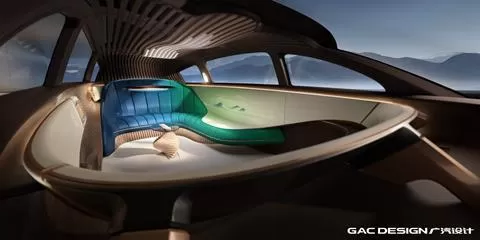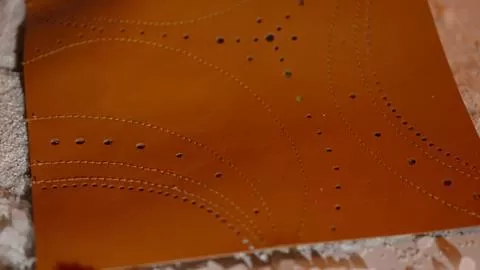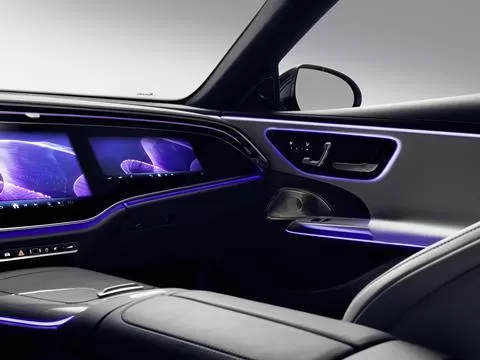In The News
How is future mobility shaping CMF?
April 4, 2023

By Freddie Holmes
Ahead of an upcoming livestream on future materials, Car Design News caught up with a handful of experts in the space to get a handle on the main talking points in this exciting field. Check Freddie’s direct link here.
Like any other corner of automotive design, the prevailing trends within colour and materials are in flux. Sustainability is front and centre of discussions, but the age-old expectations for premium look and feel, durability and cost have not gone away. In fact, things are changing on all those fronts, too, with new technology, new cabin layouts and new expectations stemming from autonomous, connected and electric vehicles.
These are of course buzzwords to which many vague promises are attributed, but when it comes to CMF the concept of “future mobility” really does have a tangible impact. Cars may not be privately owned and instead shared with others, raising new questions about longevity. Nobody wants a worn-out seat or grubby steering wheel. Perhaps the answer is in easily-changeable interiors that can be switched out and freshened up?

The radical interior of the GAC Space concept
With zero tailpipe emissions, EVs bring an expectation of sustainability – from super lightweight seat structures to new alternatives to traditional leather or fabric (in many cases whatever has the lowest CO2 footprint). Depending on the level in question, autonomous vehicles could have an entirely different layout, meaning surfaces that were once hidden away become visible, and individual seats become much larger or more modular structures. (Think about wrap-around banquet seating versus the traditional two-row format.)
“There is lots of exploration,” observes Laurie Busch, global VP of design at Pangea. Busch promotes the idea of “thoughtful, creative and responsible CMF design” but it has perhaps never been more challenging to do that with all these trends in play. “While materials need a look, a haptic, and to meet a performance requirement, there are more questions now than ever before,” she says. “Our customer is searching for materials that align with a new generation of their brand.”

Authentic materials are up against synthetic alternatives
Emma Clerici, who leads Milan-based CMF research firm Baolab Studio, says that lockdowns over the last few years have led consumers to reconsider their core values and “search for sustainable products that support a regenerative lifestyle.” This may not necessarily come in the form of a giant digital display, she suggests. “Our bodies and mind need rest, healing, and peace. The touch of something hearty and wholesome, rather than the slippery black screen.”
Nicola Danks, colour and materials manager at Lucid, is of a similar opinion. One of the prevailing trends is “expression through minimalism” she explains, “with analogue style blended with the digital experience. Not ‘persona’ driven or money driven, but more lifestyle driven.”

Are bigger screens the answer, or could those surfaces instead be tailored by CMF teams?
Danks also agrees that this is also channelling a move towards alternative materials that are perceived as being more sustainable. “Consumers are more conscious of what they purchase and the impact those choices have on themselves and the environment,” Danks says, adding that although synthetics have a place and that “science and chemistry is pushing boundaries, I am a huge advocate for more real and authentic materials in our interiors.”
For a deeper discussion on the interplay between CMF and EVs in particular, join us for a livestream on 27 April with Ultrafabrics’ Emma Reynolds and Lucid’s Nicola Danks.
The sustainability aspect is indeed fuelling a growing debate around synthetic versus authentic materials. Pangea’s Busch notes that, ultimately, “the end consumer will hopefully get to decide” the outcome of this argument, and that will require education as to what really makes a positive impact and what marauds as a green solution.

‘Muskin’ mushroom leather – one of many vegan alternatives becoming available
“Clarifying what a material is, where it comes from and how it contributes to a better world will allow CMF designers to make informed choices,” Busch explains. “For example, there are many materials on the market that claim to be ‘more sustainable’ than their predecessors, while often containing more plastic and chemical content than natural materials.”
All contributors to this article make a similar point in that “sustainable” is quite a vague term that can be open to interpretation. Often perceived as a matter of immediate CO2 reductions, they suggest that other considerations include: ability for upcycling, reusability, repurposing waste and production methods that respect both human and non-human communities. “Naturally sourced” is not necessarily better – it is about addressing the entire life cycle from cradle to grave, as it were.

Should elements of the HMI be hidden until needed?
Elsewhere, and carmakers also seem to be yo-yoing between a push for tech-heavy interiors while at the same time creating a tranquil, pared-back environment. It means balancing bigger screens and high-tech touchpoints with minimalistic design and a lack of clutter; a conflict in ideologies. Enter: the smart surface. The idea here is that switches and other elements of the HMI are hidden behind a textile or other material until needed.
“From automotive to consumer electronics, we see increasingly the interested in ‘quiet’ smart materials,” says Clerici, “surfaces that most of the time appear solid and even natural, but that shows digital layers of information when offered inputs from the user.”
![]()
The bold colour palette of the Citroen Oli concept
And what about the “C” in the CMF acronym? As CDN contributor Jens Meiners wrote for us last year, there is a yearning for more colour in the interior which, in recent decades, has become increasingly, well, grey. “After an era of neutrals, we have arrived at a thirst for colour. Tones that are both bright and breezy, that inspire us to pursue our dreams creatively and entice playfulness,” says Clerici. “Expressing oneself is the new black.”
It should probably be noted that a one-page article cannot reasonably do justice to the full scope of all these issues. Discussions will be ongoing and we expect to see many exciting movements at an OEM and supplier level. In any case, the kind of materials in play, where they are used – and in what quantity – is clearly evolving.